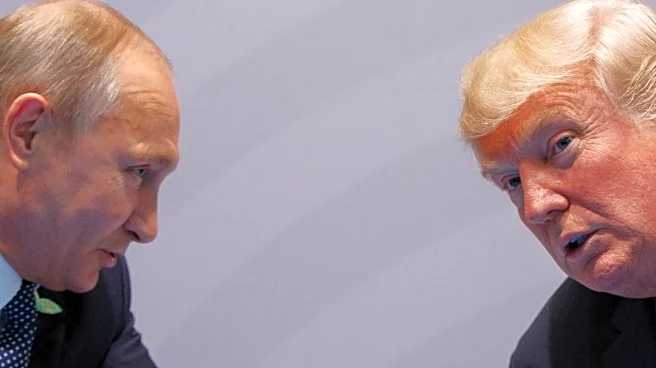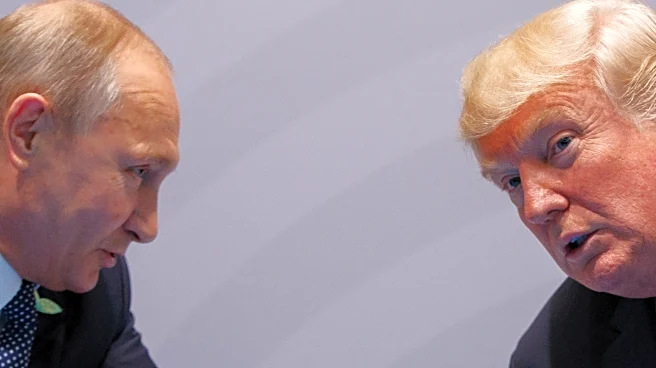What's Happening?
Oil prices experienced fluctuations as traders anticipated the upcoming summit between President Trump and Russian leader Vladimir Putin in Alaska. The meeting is expected to address the ongoing conflict in Ukraine, with a potential ceasefire on the agenda. President Trump has indicated that Russia might be willing to end the war, but he has also warned of secondary sanctions on countries purchasing Russian oil if peace talks do not progress. Brent crude futures fell by 0.96% to $66.20 a barrel, while U.S. West Texas Intermediate crude futures declined by 1.17% to $63.21. The market is closely monitoring the possibility of a ceasefire, which could lead to increased Russian oil production. However, easing sanctions on Russia would require approval from the U.S. Congress, potentially delaying any changes. Additionally, weaker economic data from China has raised concerns about fuel demand, further influencing oil prices.
Why It's Important?
The summit between President Trump and Putin holds significant implications for global oil markets and geopolitical relations. A successful peace agreement could lead to increased Russian oil production, affecting global supply and prices. Conversely, failure to reach a deal may result in heightened sanctions, impacting countries reliant on Russian oil. The broader economic context, including China's economic slowdown, adds complexity to the situation, potentially affecting global fuel demand. Stakeholders in the oil industry, including producers and consumers, are closely watching these developments, as they could influence market dynamics and international relations.
What's Next?
The outcome of the Trump-Putin summit will likely dictate the next steps in U.S.-Russia relations and the global oil market. If a ceasefire is achieved, discussions on easing sanctions may begin, though congressional approval will be necessary. The oil industry will need to adapt to potential changes in supply and demand dynamics. Additionally, ongoing economic challenges in China may continue to influence global fuel demand, requiring strategic adjustments from oil producers and consumers.













